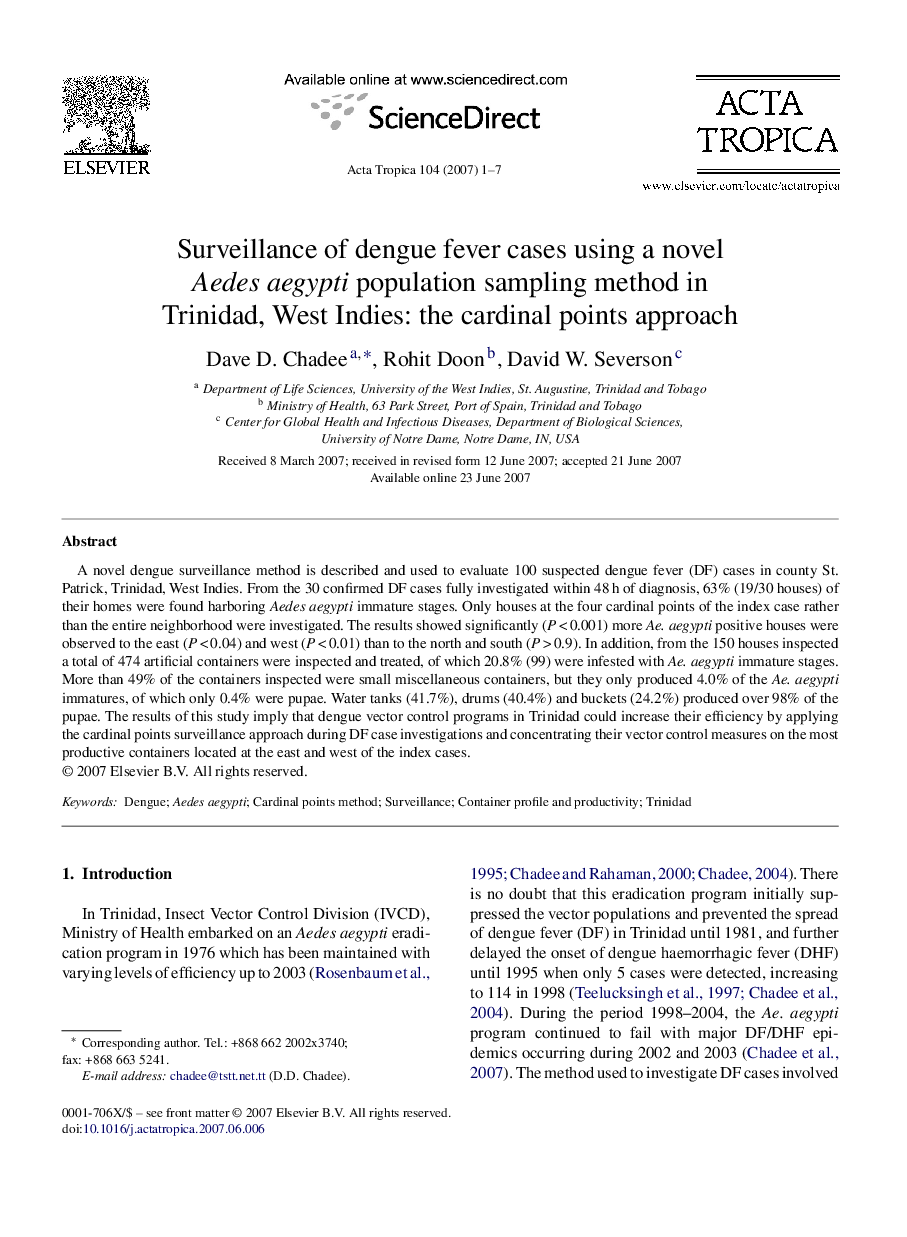| Article ID | Journal | Published Year | Pages | File Type |
|---|---|---|---|---|
| 3394418 | Acta Tropica | 2007 | 7 Pages |
A novel dengue surveillance method is described and used to evaluate 100 suspected dengue fever (DF) cases in county St. Patrick, Trinidad, West Indies. From the 30 confirmed DF cases fully investigated within 48 h of diagnosis, 63% (19/30 houses) of their homes were found harboring Aedes aegypti immature stages. Only houses at the four cardinal points of the index case rather than the entire neighborhood were investigated. The results showed significantly (P < 0.001) more Ae. aegypti positive houses were observed to the east (P < 0.04) and west (P < 0.01) than to the north and south (P > 0.9). In addition, from the 150 houses inspected a total of 474 artificial containers were inspected and treated, of which 20.8% (99) were infested with Ae. aegypti immature stages. More than 49% of the containers inspected were small miscellaneous containers, but they only produced 4.0% of the Ae. aegypti immatures, of which only 0.4% were pupae. Water tanks (41.7%), drums (40.4%) and buckets (24.2%) produced over 98% of the pupae. The results of this study imply that dengue vector control programs in Trinidad could increase their efficiency by applying the cardinal points surveillance approach during DF case investigations and concentrating their vector control measures on the most productive containers located at the east and west of the index cases.
